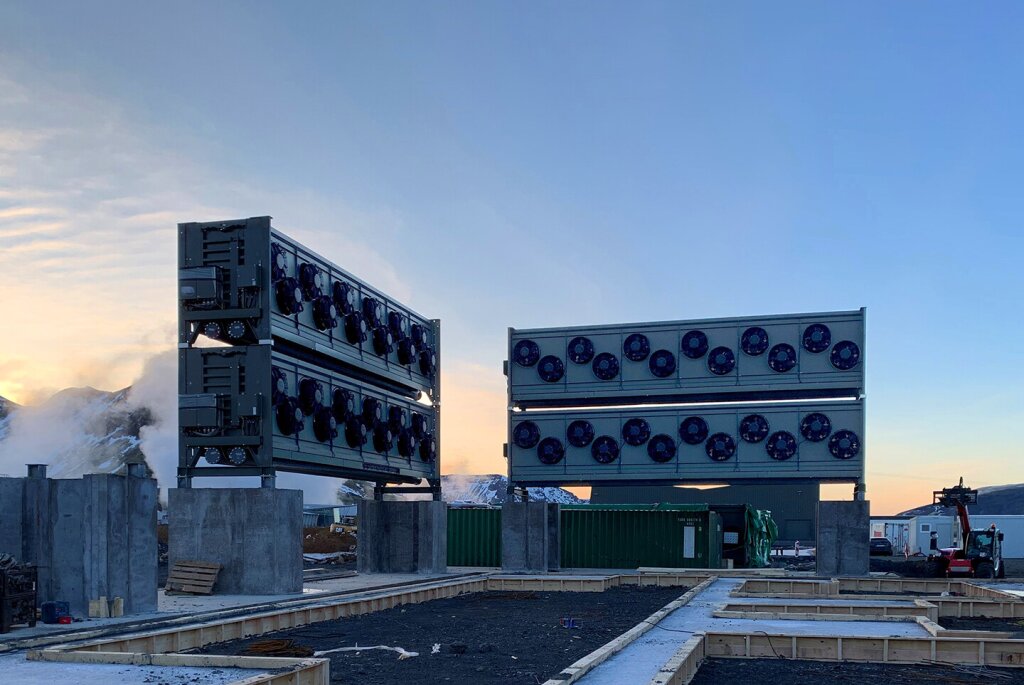Climate Insider Brief:
- Carbon removal technologies are increasingly crucial for companies, especially tech giants engaged in the competitive race to lead in artificial intelligence.
- Microsoft (MSFT) has emerged as a significant player in the carbon removal space, purchasing over 7.6 million carbon credits since 2020.
- According to Boston Consulting Group estimates, the annual demand for durable carbon dioxide removal (CDR) is expected to reach 40 million to 200 million tons of CO2 by the end of this decade, while the supply is projected to be between 15 million and 32 million tons.
Carbon removal technologies are increasingly important for companies, particularly tech giants engaged in the competitive race to lead in artificial intelligence. Once seen as a distraction from the critical task of cutting emissions, projects that extract and sequester carbon dioxide from the atmosphere—such as direct air capture facilities and reforestation efforts—are now recognized as essential steps toward achieving key climate change targets.
“There are some portions of company emissions that you will just never abate,” Karan Mistry, managing director and partner for Boston Consulting Group, told Yahoo Finance. “[Companies are] recognizing that they have a net-zero target and they want to actually get to zero and honour their very public commitments, they have to invest in some sort of removal technology.”
Frontier Fund, a consortium of investors including Alphabet (GOOG), JPMorgan (JPM), and Meta (META), has purchased contracts to remove more than 510,203 tons of carbon to date. Last year, the fund made a significant commitment by agreeing to pay $57.1 million to enhanced rock weathering startup Lithos Carbon to remove 154,000 tons of carbon from the atmosphere.

“All of these frontrunners in the carbon market, they’re not just interested in what they can buy today,” Henry Liu, head of engineering at Lithos Carbon, told Yahoo Finance. “They’re investing in the future of the carbon dioxide removal market. [With] the scale of the market, they recognize that investment is needed. So they’re looking to support pathways.”
As the number of companies making net-zero commitments grows, so do overall global emissions, with emerging technologies further complicating the achievement of these commitments. The International Energy Agency recently warned that the energy consumption from data centres, AI, and the cryptocurrency sector could double by 2026 due to the scale and speed of data processing required for AI technology.
This realisation has spurred a surge in investments in carbon removal startups. In 2023, direct air capture firms and those using nature-based carbon removal methods raised over $1 billion combined, according to PitchBook data. The number of carbon removal credits sold jumped more than 650% from the previous year, according to CDR.fyi.
Leading investments are seen in the energy, manufacturing, and transportation sectors, with major tech companies also investing in carbon removal to address their emissions. Microsoft (MSFT), a significant player in the AI race, is one of the largest buyers, with more than 7.6 million purchases of carbon credits since 2020. Despite the company’s goal to become carbon-negative by the end of the decade, its carbon emissions have increased by 30% since 2020, as reported in its sustainability report.
In a recent interview with Bloomberg, Microsoft President Brad Smith acknowledged that the goal would be more challenging with the company’s AI ambitions. “In many ways, the moon is five times as far away as it was in 2020, if you think of our own forecast for the expansion of AI and its electrical needs,” he said.
Challenges in the Market
While carbon credits have largely been limited to voluntary markets, companies are preparing for potential regulation that may mandate purchases to reach net-zero goals. However, demand is expected to outstrip supply, even with numerous startups working to remove carbon on behalf of emitting companies.
Boston Consulting Group analysis estimates an annual demand for durable carbon dioxide removal (CDR) to reach 40 million to 200 million tons of CO2 by the end of this decade, while supply is projected to be 15 million-32 million tons. Companies are investing in nascent technologies with clear processes for monitoring, reporting, and verifying the quality of carbon removed to get ahead of this expected shortfall.
However, the impact is still challenging to quantify, depending on the removal process. Companies offering high-integrity offsets remain among the most expensive, as the technology has not yet scaled.
“If you want someone to buy a CDR offset or a carbon offset, you want them to feel good that they actually bought what they said they did,” Mistry said. Direct air capture (DAC) has the simplest measuring system, according to Mistry, whose firm has invested in several DAC companies, including Climeworks. However, DAC requires building large factories that can suck carbon dioxide out of the air, costing $600 to $1000 per ton of carbon captured.
Methods relying on agricultural waste are considered cheaper but require substantial land. Planting trees may be among the most economical methods, but Mistry argues that carbon storage isn’t as permanent. “You can estimate how much carbon is in the tree, but there are questions like, what happens if it gets cut down? What happens if there’s a forest fire?” Mistry said.
These credibility questions have recently hampered the market, with studies showing many carbon offsets have not resulted in the promised carbon removal. However, the carbon market received a vote of support from the Biden administration last Tuesday when it unveiled a framework for using voluntary carbon offsets, recognizing that the country will not achieve its net-zero goal by 2050 through emissions reductions alone.
“We need to use all the tools at our disposal — creatively, thoughtfully, and at scale,” said Treasury Secretary Janet Yellen, praising the role of carbon removal technology in helping companies achieve their climate goals. However, she emphasised, “Corporate buyers should prioritise reducing their own emissions, particularly through transition planning.”
To stay informed about the climate industry explore our latest climate news.
SOURCE: Yahoo Finance
Featured Image: Credit: Climeworks








